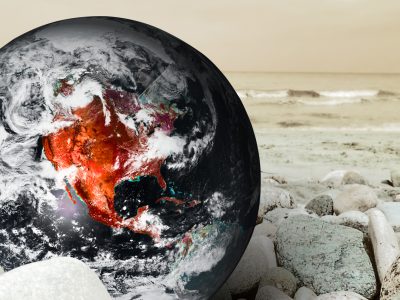Weighing the risks and benefits of the opportunity cost of environmental degradation to industrialisation
Industrialization can easily be considered the most important economic development in human history. Given its features of exponential leaps in productivity, industrialization is considered essential for economic growth and poverty reduction in the long run. After the Second World War, India chose an economic strategy of industrialization and the dominance of the state in the economy. The development came to be considered synonymous with industrialization, and industry was focused mainly on basic goods like steel and machinery. However, after reforms in resource allocation in the 1980s and 1990s, growth was remarkable in manufacturing and services, resulting in a more resilient and robust economy.
On analysing the growth patterns of developing countries like China and India and contrasting them with growth in developed countries such as the U.K. and Canada, we see a clear shift in the focus of the economy, which is explainable by the Solow model. Countries with low GDP place a greater emphasis on economic output, which helps to produce shelter, education, health, nutrition & other desirable consumer goods. Countries with higher economic levels may be willing to place a relatively greater emphasis on environmental protection because in the steady state, all per capita income growth is due to exogenous technological change.
Because of its direct inputs in our economy, the environment has a key role as a national resource. Environmental resources such as fossil fuels and minerals are direct facilitators of the production of goods and services. It also enables other economic activities such as sequestering carbon, filtering air and water pollution, protecting against flood risk and soil formation.
While it is true that industrialization provides opportunities to create a better standard of living in all regions, the risks of environmental degradation that accompany rapid industrialisation raise many questions. How efficient are our systems in an environment that is being continuously compromised by industrial pollutants? Pollution is an externality that is capable of causing market failure. Even in countries that maximise their economic output as opposed to environmental protection pollution is a major game-changer. Industrial pollution is directly responsible for poor air quality, something that is being seen with spikes in AQI levels in India frequently in the past few years. Untreated water from chemical solvents used in dyeing and tanning industries contributes greatly to water pollution. According to a WHO estimate, the burden of disease from water and air pollution accounts for the loss of over 100 million disability-adjusted life years globally each year, with the majority impact occurring in developing countries. Thus, there is a risk to both the quantity and quality of labour in economies.
Additionally, there is the risk of irreparable damage to those sources from which we obtain economic activity, such as widespread contamination of fresh water in a closed region, or irresponsible disposal of nuclear waste in the environment. Once compromised, these resources will no longer be available to us for providing any economic activity.
There is a dire need for pollution regulation to balance environmental protection with economic growth in developing countries. However, this regulation comes with its own opportunity cost.
The cost of production of goods and services is increased by-laws that require firms to reduce pollution. Because of the higher costs, these firms earn smaller profits, pay lower wages, charge higher prices or some combination of these three. Thus, pollution regulations come at the cost of reducing the incomes of the firms’ owners, workers and customers, even though they bring about a cleaner environment and the improved health that comes with it and is beneficial to labour.
The development of cleaner technologies accompanied by adaptive use of natural resources and impactful corporate environmental risk management is the key to reducing the adverse impacts of industrialization, and economic activity more generally. Besides this, a balancing act between environmental protection and economic growth needs to be adopted worldwide. This includes powerful environmental risk management and an industry risk management plan to ensure that all relevant issues are addressed. Especially for countries bent on increasing their production and consumption, an environment that is capable of carrying both is the only sustainable environment.
Blog Author: Sara Batool – Member, Student Risk Committee (IRM India Affiliate)











